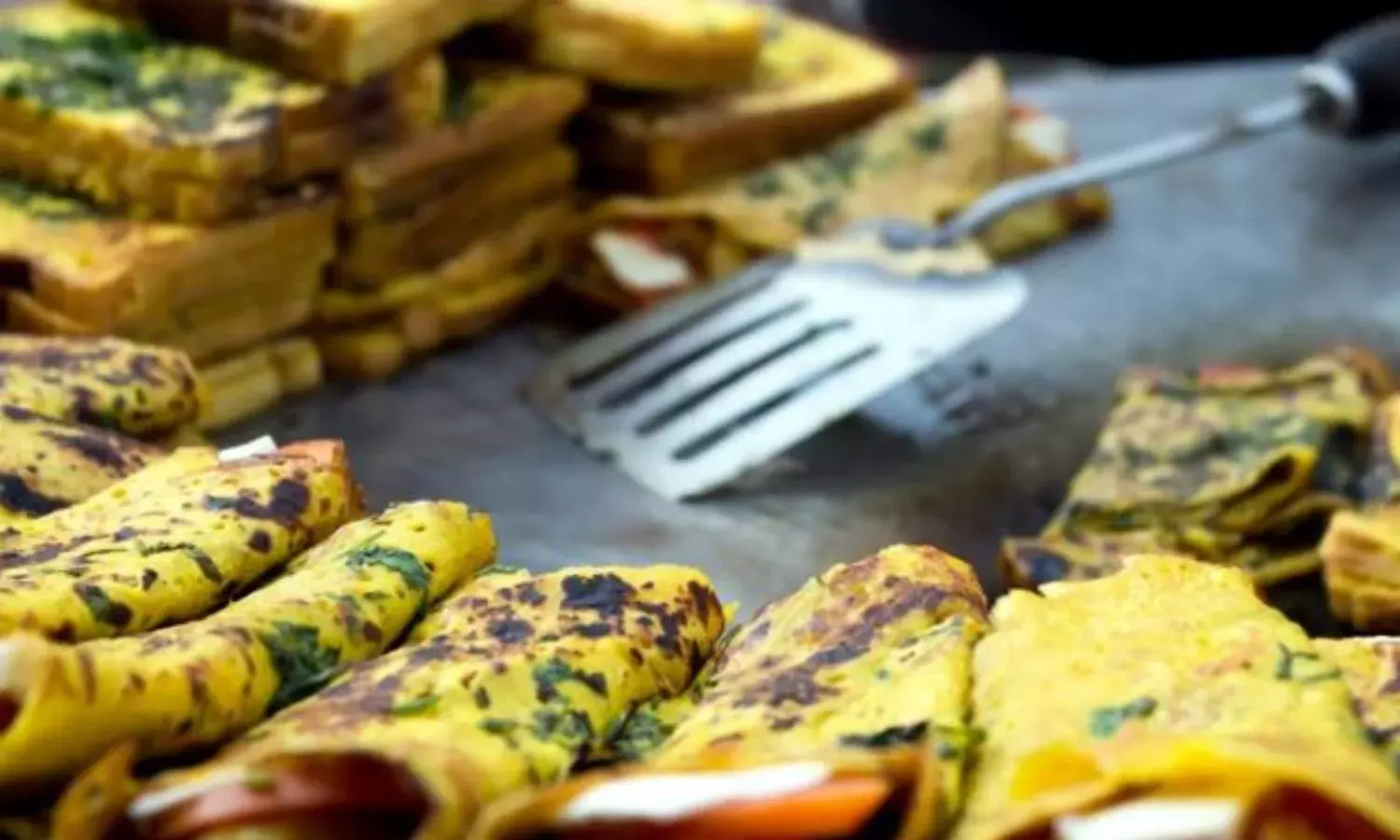Where the World is the Body and Delhi The Soul!
Food-lore from the streets of Delhi;

Delhi, a city that has been destroyed and restored seven times till date is also called 'the city of monuments’ as it still holds the memories of its chaotic past in the centuries old stony mausoleums.
While the extravagant forts and palaces give us a sense of the royal way of living, the food still belongs to the streets where it was developed.
Delhi has been the capital of many kingdoms for over a thousand years. Consequently, the best of the best of everything from food to clothes was brought into Delhi, to the royal courts and from there to the bazaars.
One such bazaar is ‘Khari Baoli,’ which was established in 1551. It is the biggest spice market in Asia, situated close to Lahori Gate, from where the traders from Lahore (Pakistan) and Afghanistan used to set foot in Delhi.
According to a food-lore, the credit for making Delhi’s cuisine spicy and greasy and delicious of course, goes to only one person- Shah Jahan's personal physician. In 1638, when the emperor elected Delhi as his capital and shifted here from Agra (the former capital), his physician was apprehensive.. He forewarned that the Yamuna river water was not potable and could cause serious water- borne diseases. As moving back to Agra was not an option, the physician prescribed highly spicy food as an antidote.
But this too was not a perfect solution as spicy food created its own health complications. So food lore has it that the physician recommended clarified butter to be used as the cooking medium, as its greasy texture would alleviate the side effect of the strong spices. However, the Emperor’s food was always cooked in rainwater mixed with water brought in from the river Ganges.
While the non vegetarians were using lots of spices and clarified butter to cook their meat, the vegetarians invented ‘chaat’. This vegetarian classic was packed with flavour- it was primarily sweet and spicy with a dash of sourness. Over the course of a very short period of time, a range of vegetarian dishes emerged.
Amidst Hindus who were consuming chaat, and affluent Muslims meat in ghee, the impoverished Muslims who could not afford clarified butter invented nihari. In this method of cooking the meat is cooked in the animal's own fat slowly over the night, which is converted into a thick gruel. The popularity of this delicacy is such that after the early morning namaz at Jama Masjid, Nihari from Shabrati is a first preference for breakfast. This Nihari is so in demand that within two hours their pots are empty.
Nihari was invented around 400 years ago in the fragrant streets of Matia Mahal which is often referred to as a Mecca for food lovers. Today, their streets are dotted with many small restaurants and makeshift stalls selling nihari, korma, kebabs, seviyan and many varieties of sweetmeats. The most famous among them is Karim’s, as their ancestors were chefs in the royal kitchen of the Mughals. Since 1913, Karim's has been selling Mughlai food to the people of Delhi.
Like Matia Mahal, there is another street which is popular among mostly vegetarians, originally named Dariba Khurd. This iconic street, now famously known as ‘Parathe Wali Gali,’ is no less than a Mecca for parathe lovers. The ancestral shops here offer 30-40 varieties of parathas, including the ones made of mint, rabdi (sweet condensed milk) and tomato. A lesser known fact about 'Parathe Wali Gali' is that before independence many freedom fighters used to meet up here to discuss strategy while consuming their favourite parathas.
Since the end of 17th century, the chaat and kebab sellers with the stands slung over their shoulders, and with their carts and baskets have kept the trend of ‘Khomchewala' (barrowman) alive. The word of mouth publicity varied about who was the best at what kind of food. However,, here were a few extraordinary dishes that truly measured up to their popularity like Maseeta's kebabs and Ghantewala’s sweetmeats.
Another such masterwork is a speciality which emerges exclusively in winters; a sweet chaat which is one of its kind- daulat ki chaat. Before independence, a man named Daulat used to sell it and in order to honour his memory, Delhites named the delicacy after him. This chaat is made by leaving a mixture of milk, malai (cream) and khoya (milk solids) overnight on the rooftop, where the winter winds give it a light foamy texture. It is so smooth that it melts in the mouth as soon as it comes in contact with the tongue. In Lucknow it is known as namish.
Today, many might find these iconic streets of Delhi too narrow or overcrowded to pay a visit, however, amidst the chaos and commotion among the rulers, these streets and their food were what kept the spirit of Delhi alive. But for the foodies these streets continue to beckon. To date, there is no better way to describe the beauty of these narrow seeming streets than renowned Urdu poet Mirza Ghalib's lines, “Ik roz apni rooh se poocha, ki Dilli kya hai, to yun jawab main keh gaye, yeh duniya mano jism hai aur Dilli uski jaan (I asked my soul, ‘What is Delhi?’ It replied: ‘The world is the body, Delhi its soul.”)’’
Pushpesh Pant is a food connoisseur and a Chef at a well known Delhi restaurant.

